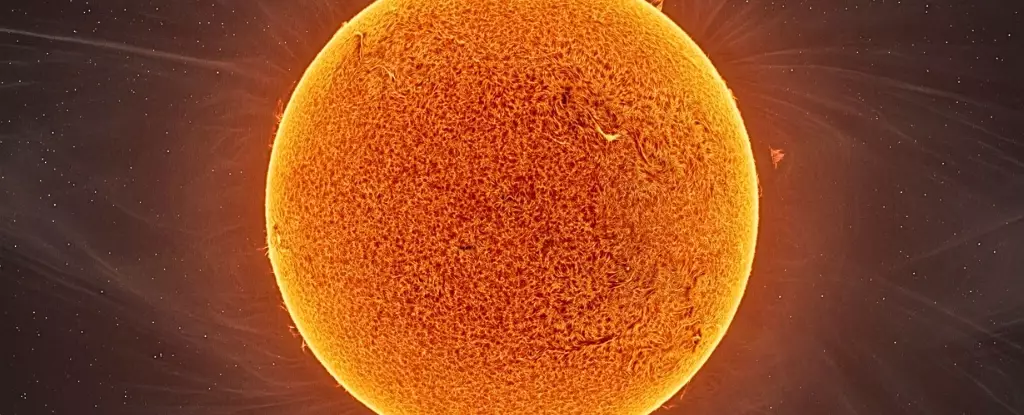Astronomy has long been revered as a window into the universe’s most profound mysteries, and recent discoveries surrounding starquakes signify a leap into an even deeper understanding of stellar life cycles. While the notion of “music” emanating from stars may initially sound like poetic fiction, scientists are revealing how enormous vibrations—caused by bubbles of gas bursting on the surfaces of stars—can yield remarkable insights into their histories and inner workings. The studies that utilize data from missions like Kepler offer an unprecedented opportunity to deepen our comprehension of not only individual stars but also the grand narrative of our galaxy, the Milky Way.
The Symphony of Starquakes
As gas bubbles ascend and burst like a pot of boiling water, they send out vibrations—the stellar equivalent of sound waves. These vibrations manifest in what researchers call resonant frequencies, which can be discerned through subtle changes in brightness. Investigating these frequencies across various giant stars in the M67 star cluster, approximately 3,000 light years away, has unveiled profound revelations. Each star is akin to a musician, “playing” a unique melody, with its internal structure dictating its sonic outputs.
Despite traditional beliefs that starquakes in older stars provided little significant information, researchers have challenged this idea. The realization that crucial frequency signatures—particularly the so-called small spacings—can reveal distinct changes in a star’s internal structural dynamics is revolutionary. For example, in younger stars such as our Sun, these spacings can hint at remaining hydrogen reserves. Conversely, in the aged giants of M67, a surprising complexity emerges, revealing the thickening hydrogen shell surrounding the inert core.
Stalling Frequencies: A Cosmic Puzzle
Perhaps the most intriguing discovery pertains to what scientists describe as “stalling frequencies.” It’s almost poetic: at a certain evolutionary stage, a star can be found “stuck” in its resonant frequencies, unable to transition, much like a record stuck on repeat. This phenomenon occurs when the star’s outer envelope expands significantly, making up 80% of its mass. As it reaches a particularly tumultuous area deep within, the dynamics of sound wave transmission shift dramatically, revealing new dimensions of stellar behavior.
Through this framework, the research out of M67 elucidates an ability to identify and age stars more precisely than previous methods allowed. The deeper scientists probe into these celestial vibrations, the more nuanced their understanding of stellar evolution becomes. It emphasizes a fundamental truth: that the age of stars not only enhances our knowledge of their individual trajectories but also allows us to piece together the cosmic mosaic of the Milky Way.
Starquakes as Galaxies’ Historical Chronicles
Standing at the crossroads of this intriguing research is a profound implication for our understanding of galaxy formation. The Milky Way, a confluence of stars evolving over billions of years, holds a rich history written in the fabric of its stars. M67 offers an unprecedented microcosm—a glimpse into how stellar aggregation informs galactic evolution while tracing back the numerous mergers and star formations that have shaped our home galaxy.
These insights provide astronomers with a tangible method for reconstructing historical timelines within the Milky Way, akin to a historian meticulously piecing together ancient texts. By comparing the frequency signatures of stars scattered throughout our galaxy, researchers can create a chronological map illustrating the myriad processes that have influenced stellar development and, ultimately, the architecture of the galaxy itself.
Reflections on Our Sol’s Future
As we delve into the starquakes of M67, the implications extend existentially to our own Sun. Understanding the transformations our star will undergo as it nears the end of its life presents an opportunity for humility in our own journey through the universe. After all, we are made of star-stuff, and the fate of our solar system is intricately interwoven with these cosmic cycles. Exploring these critical moments offers a reflective practice on what it means to inhabit this small blue planet amidst the vast cosmos.
The work coming out of studies like this is powerful. It brings clarity to the arcane nature of stellar dynamics while inviting a sense of wonder about our place in the universe. When we “listen” carefully to the songs of stars, we unlock the secrets they whisper about their past, present, and future. It is not just science; it is a call to acknowledge the harmony that binds us to the cosmos. “Playing the same part of their tune,” stars remind us that the universe is alive with stories waiting to be uncovered, transforming our understanding of what it means to exist among the stars.

